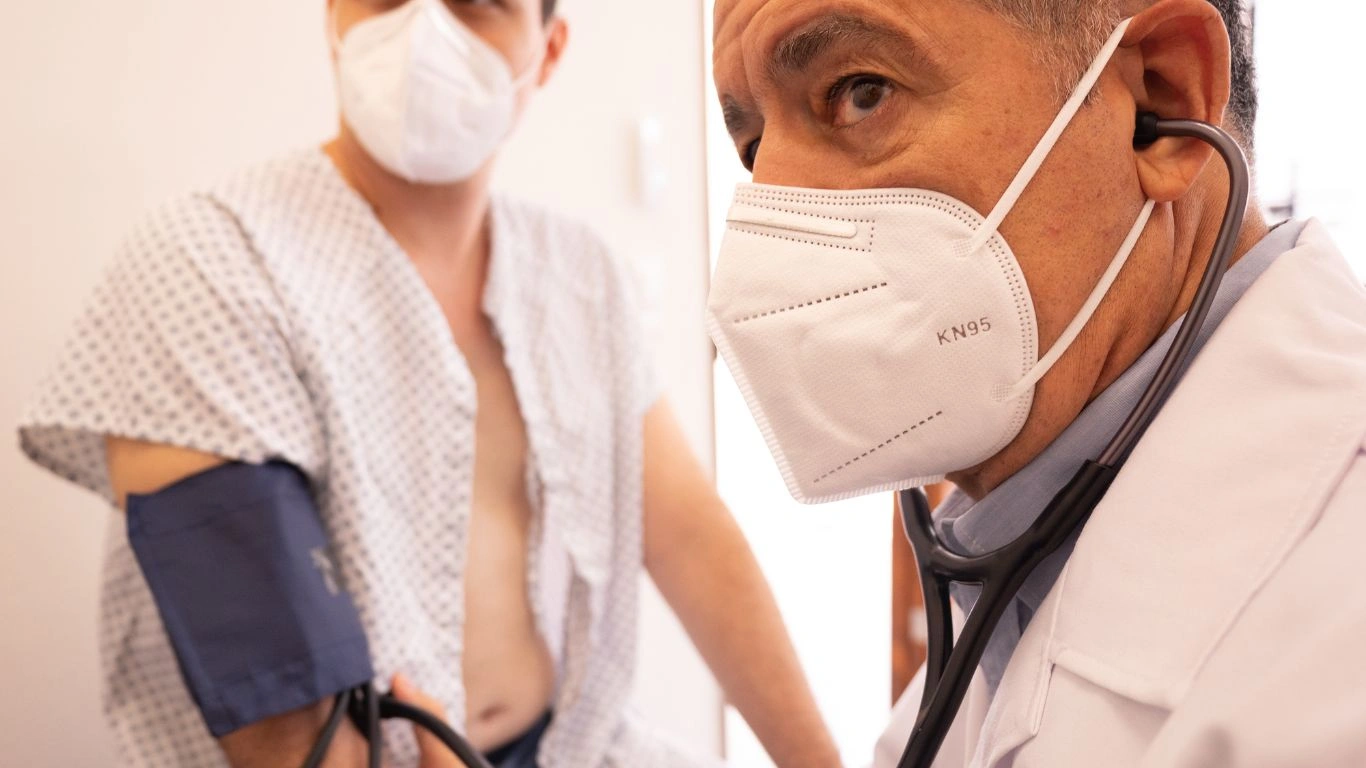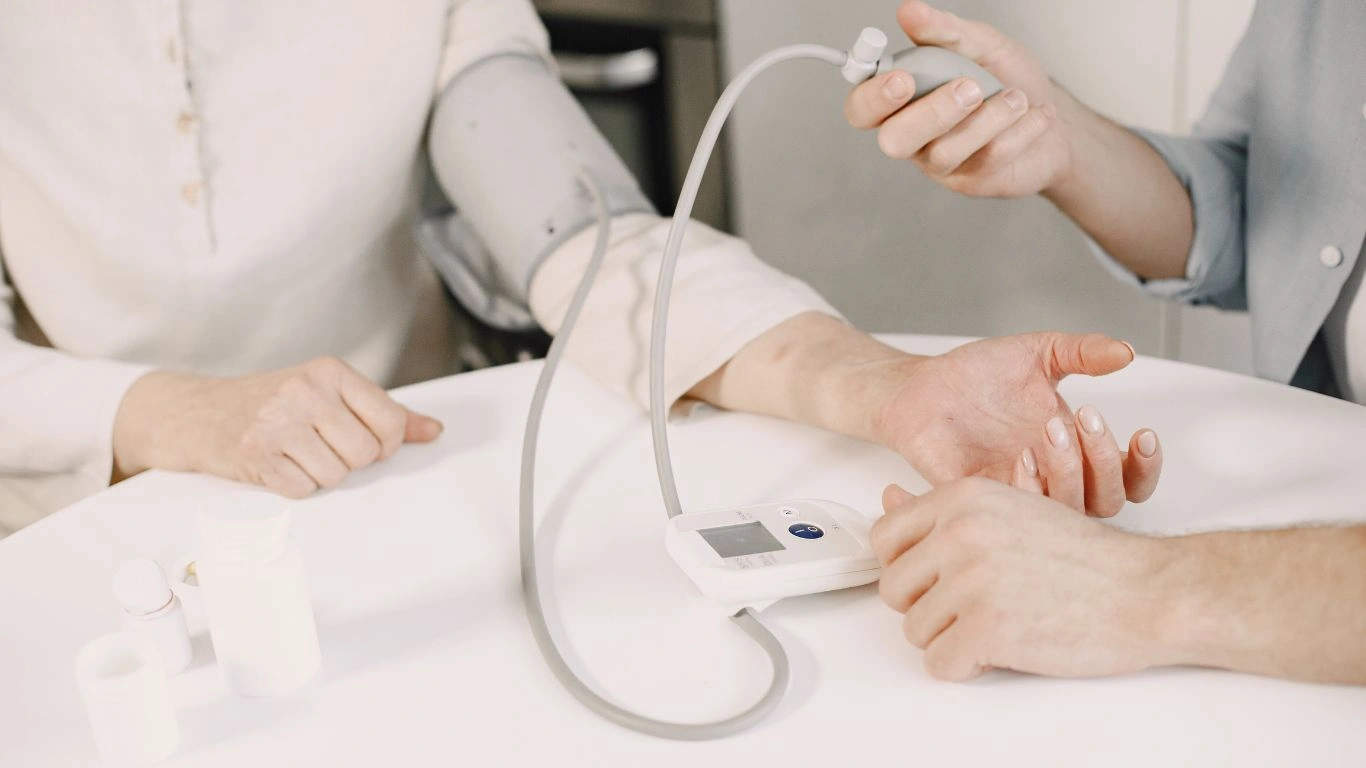How to Create an Effective Hypertension Care Plan for Better Health
As an internal medicine physician with years of experience in managing hypertension, I’ve seen firsthand how critical it is to create an effective and personalized hypertension care plan for each patient. Hypertension, or high blood pressure, is one of the leading causes of cardiovascular disease, and while it’s a common condition, its management requires a thoughtful, tailored approach. So, how to create a hypertension care plan? Well, it’s not just about prescribing medications—though that’s certainly a key component. It’s about taking a comprehensive view of each patient’s health, considering lifestyle, medical history, and even emotional well-being. Let’s break down the steps to building a solid, long-term hypertension care plan that can make a real difference in managing this condition.
Understanding Hypertension: The Foundation of Your Care Plan
Before we dive into the specifics of creating a care plan, it’s essential to understand what hypertension really is and how it impacts the body. Hypertension often goes unnoticed because it’s called the “silent killer.” Many people don’t experience any obvious symptoms, even when their blood pressure is dangerously high. This is why routine screenings are crucial to catch the condition early. However, once diagnosed, it’s time to set up a comprehensive care plan to help manage blood pressure and reduce the risks of complications such as stroke, heart attack, and kidney disease.
The Importance of Personalization in Hypertension Care
When I think about how to create a hypertension care plan, the word that always comes to mind is “personalization.” Every patient is unique, and what works for one person may not work for another. For instance, a care plan for someone in their 70s with a history of heart disease will look very different from a care plan for a 40-year-old with hypertension and no significant medical history. Age, gender, medical history, lifestyle, and even the patient’s mental and emotional health must all be factored into the plan. These personalized details ensure that the patient receives the most effective treatment for their specific situation.
Step 1: Conducting a Thorough Assessment
Building a successful hypertension care plan starts with a thorough assessment. I can’t emphasize enough how important this step is. When a patient walks into my office, the first thing I do is ask a series of detailed questions about their health, habits, and medical history. We’ll discuss their diet, exercise routine, sleep patterns, stress levels, and even family history of hypertension or other cardiovascular diseases. All of this information helps paint a picture of the patient’s overall health and will guide the next steps in the plan.
Key Factors to Evaluate
- Blood Pressure Measurements: Accurate and consistent readings are crucial. It’s recommended to take several readings over a period of time to get an accurate picture of a patient’s blood pressure.
- Physical Activity Level: Sedentary lifestyles contribute significantly to hypertension. Encouraging patients to be more active can make a world of difference.
- Dietary Habits: A poor diet, especially one high in sodium, processed foods, and unhealthy fats, can worsen hypertension. I always make sure to assess their eating habits thoroughly.
- Weight Management: Obesity is a major risk factor for high blood pressure. A detailed evaluation of their weight and BMI helps tailor the care plan accordingly.
- Medication Review: Some medications can contribute to elevated blood pressure. It’s important to review any current prescriptions the patient is taking.
Step 2: Establishing Blood Pressure Goals
Once we’ve gathered the necessary information, the next step is to establish realistic blood pressure goals. Setting a target is crucial, but it’s important to keep in mind that the target should be achievable and specific to the individual. Generally, for most patients, the goal is to keep their blood pressure below 140/90 mmHg, but this can vary depending on factors like age, comorbidities, and overall health status. For patients with chronic kidney disease or diabetes, for instance, more stringent control may be necessary. However, the key is to set a goal that aligns with the patient’s health status and lifestyle.
Personalizing the Blood Pressure Target
In my practice, I work with patients to determine the blood pressure target that will reduce their risk of cardiovascular events, such as heart attacks or strokes, while still being realistic. Some people may need more aggressive treatment, while others may do well with lifestyle changes alone. This is why it’s essential to monitor and adjust the goal over time, taking into account how well the patient is responding to the treatment plan.
Step 3: Lifestyle Modifications – The Cornerstone of Hypertension Management
When it comes to managing hypertension, lifestyle modifications are often the first line of defense. While medications are important, they’re not the only tool we have. In fact, I’ve seen many patients reduce their blood pressure significantly by making changes to their diet, exercise routine, and overall habits. As part of the care plan, I always discuss the following lifestyle modifications with my patients:
Dietary Changes
A healthy diet is one of the most powerful tools in managing hypertension. The DASH diet (Dietary Approaches to Stop Hypertension) is one of the most recommended eating plans for those with high blood pressure. This diet emphasizes fruits, vegetables, whole grains, lean proteins, and low-fat dairy, while reducing salt, sugar, and processed foods. In fact, studies have shown that following the DASH diet can lower blood pressure significantly. In my experience, patients who stick to a healthier diet are often able to reduce their need for medication or at least improve the efficacy of their prescribed medications.

Physical Activity
Regular exercise is a game-changer when it comes to managing hypertension. Even a modest increase in physical activity can help reduce blood pressure. Walking, cycling, swimming, or even yoga can have a significant positive impact. I always recommend at least 30 minutes of moderate-intensity exercise most days of the week. It’s important to tailor the exercise plan to the patient’s fitness level and preferences, so they’re more likely to stick with it. For some, even starting with a daily walk is a great way to get moving.

Stress Reduction
Stress is a major contributor to high blood pressure, and managing stress effectively is key to hypertension management. I often recommend practices like deep breathing exercises, meditation, or mindfulness techniques. Some patients find that simply reducing work-related stress or making time for hobbies and relaxation can lower their blood pressure significantly.
Step 4: Medication Management in Hypertension Care
While lifestyle changes are incredibly important, managing hypertension often requires medication to bring blood pressure under control. When I work with patients, I always make sure to explain the purpose of the medications clearly, so they understand why they’re necessary and how they work. Medications can be divided into several classes, and the choice of which to use depends on the patient’s overall health, other underlying conditions, and their response to initial treatments.
Common Hypertension Medications
There are a few key classes of medications that are commonly prescribed to manage high blood pressure. Here’s a quick rundown of the most popular ones:
- ACE Inhibitors: These medications, like enalapril or lisinopril, help relax blood vessels and reduce the workload on the heart. They’re often used in patients with diabetes or kidney disease.
- Beta Blockers: Drugs like metoprolol and atenolol slow the heart rate and reduce the heart’s workload. They’re often used when there’s a history of heart disease.
- Calcium Channel Blockers: These medications, such as amlodipine or diltiazem, help relax and widen blood vessels by blocking calcium from entering heart and blood vessel cells.
- Diuretics: Also known as “water pills,” diuretics like hydrochlorothiazide help the body remove excess sodium and water, which helps reduce blood pressure.
- Angiotensin II Receptor Blockers (ARBs): Medications like losartan and valsartan help relax blood vessels similarly to ACE inhibitors but with fewer side effects.
Each of these medications has its own benefits and potential side effects, so it’s crucial to work closely with patients to find the right combination that works for them. One thing I’ve learned over the years is that a bit of trial and error is often required before the perfect regimen is found. Some patients will need a combination of medications to reach their target blood pressure, while others will find success with just one. A lot of this comes down to the individual’s unique physiology, which is why ongoing follow-up is so important.

Step 5: Regular Monitoring and Follow-up
Hypertension management doesn’t stop once a care plan is in place; regular monitoring is essential to ensuring that the plan is working. I always tell my patients that managing high blood pressure is an ongoing process, not a one-time fix. In fact, one of the best ways to track progress and make adjustments to the care plan is through regular follow-up appointments and at-home monitoring.
How Often Should You Monitor Blood Pressure?
For patients diagnosed with hypertension, I typically recommend home monitoring to keep a close eye on their blood pressure between doctor visits. Devices like automatic blood pressure cuffs can be purchased for at-home use, and I encourage patients to record their readings at the same time each day. This helps us track trends and catch any potential issues before they become serious. Depending on the severity of their condition and the medication regimen, I might ask for daily measurements, but at least 2-3 times a week is a good baseline for most people.
In-office visits are equally important, though, especially in the early stages of treatment. During these visits, I can assess how well a patient is adhering to their medication and lifestyle plan, and make adjustments as needed. For some, that means increasing medication doses, adding new medications, or making changes to their lifestyle recommendations. Monitoring is the key to fine-tuning the treatment plan and ensuring long-term success.
Managing Blood Pressure Variability
Blood pressure naturally fluctuates throughout the day, depending on factors like activity levels, stress, diet, and sleep. That’s why it’s important to look at a series of readings over time rather than relying on just one. I always advise my patients to take their blood pressure at the same time each day and in the same conditions (like after sitting for a few minutes and before any food or exercise). This helps ensure consistency and makes it easier to identify patterns.
Step 6: Addressing Comorbidities and Risk Factors
When creating a hypertension care plan, it’s crucial to look beyond just the blood pressure readings. Hypertension doesn’t exist in a vacuum—it often comes hand-in-hand with other health conditions. Managing these comorbidities and risk factors is a key part of a successful care plan. For instance, diabetes, obesity, or high cholesterol can all exacerbate high blood pressure and make it harder to control.
Managing Diabetes Alongside Hypertension
As a physician, I frequently treat patients who have both hypertension and diabetes, which can present unique challenges. High blood pressure can worsen kidney function in diabetic patients, while high blood sugar can make the blood vessels more rigid, making blood pressure harder to control. For these patients, I work with an endocrinologist to create a comprehensive care plan that addresses both conditions simultaneously. The goal is to keep both blood sugar and blood pressure under control, as this can dramatically reduce the risk of complications like stroke, heart failure, or kidney damage.
Weight Management and Hypertension
Obesity is another common risk factor for hypertension, and in my experience, weight loss can lead to significant improvements in blood pressure. A simple reduction in body weight—often as little as 5-10% of total body weight—can help lower blood pressure significantly. This is why weight management is a cornerstone of hypertension care. I always emphasize the importance of gradual, sustainable changes, rather than drastic weight loss methods. I also work closely with dietitians and exercise physiologists to help my patients develop a healthy, manageable weight-loss plan.

Cholesterol Management
Managing cholesterol is another important part of a hypertension care plan. High cholesterol, particularly high levels of LDL (bad cholesterol), can contribute to the thickening and hardening of blood vessels, which makes it harder for the heart to pump blood. This can exacerbate high blood pressure and increase the risk of heart disease. For many of my patients, I recommend cholesterol-lowering medications, along with lifestyle changes, such as a diet low in saturated fats and trans fats, and regular physical activity.

Step 7: Empowering Patients through Education and Support
One of the most rewarding aspects of managing hypertension is working closely with patients to help them understand their condition. Education is key. In my practice, I’ve found that when patients understand why hypertension is dangerous and how they can manage it effectively, they become much more proactive in sticking to their care plans. Empowering patients with the knowledge they need to make informed decisions about their health can lead to better outcomes and a greater sense of control.
Patient Education: A Vital Component of Hypertension Care
It’s not enough to just prescribe medication or recommend lifestyle changes; patients need to understand how these elements fit together to form an effective hypertension care plan. I take the time to explain what hypertension is, how it affects the body, and why managing it is crucial for preventing long-term complications. I’ve had many patients tell me that understanding the risks helped motivate them to stick with their diet and exercise routines. The more informed they are, the more likely they are to follow through with their treatment plan.
Alongside explanations of medication and lifestyle changes, I often provide resources for patients to read or websites they can explore to further educate themselves. I also recommend support groups or online forums where they can connect with others facing similar challenges. Having a community can provide emotional support, share practical tips, and help with accountability.
Breaking Down the Care Plan into Manageable Steps
When patients feel overwhelmed by their diagnosis, it’s easy for them to disengage. That’s why I break the care plan down into manageable steps. Instead of presenting everything at once, I focus on the most important areas first, like controlling blood pressure through diet and medication, and gradually build from there. I often remind my patients that managing hypertension is a marathon, not a sprint. Little changes over time can add up to big improvements. Encouraging small, achievable goals makes it easier for patients to stay motivated and positive about their progress.

Step 8: Incorporating Technology for Better Blood Pressure Control
In recent years, technology has revolutionized the way we manage chronic conditions, and hypertension is no exception. There are now a variety of apps, devices, and online platforms that can help patients track their blood pressure, monitor their progress, and stay connected with their healthcare providers. As a physician, I encourage my patients to take advantage of these tools to stay on top of their health.
Blood Pressure Monitoring Devices
One of the most valuable pieces of technology for hypertension management is the home blood pressure monitor. I always suggest that my patients invest in an automatic cuff-style blood pressure monitor, as it allows them to easily check their blood pressure at home and keep track of their readings. This not only helps provide a more accurate picture of their blood pressure over time but also gives them a sense of control and involvement in their care.
When using a home blood pressure monitor, I guide patients on how to take measurements correctly. For instance, it’s essential to take the readings at the same time each day, ensure they are seated comfortably with their arm supported, and avoid any activities that might elevate their blood pressure, like smoking or exercising, right before taking the measurement.
Health Tracking Apps
There are plenty of health tracking apps available today that can sync with devices like blood pressure monitors, fitness trackers, and even smart scales. These apps can help patients keep track of their diet, exercise, weight, and blood pressure, providing a convenient way to monitor progress. I often recommend apps like MyFitnessPal for diet tracking or Fitbit for overall health tracking, as they integrate seamlessly with many devices and provide useful insights into a patient’s health journey.
Technology also allows for better communication between doctors and patients. Some platforms allow patients to send their blood pressure readings directly to their healthcare provider, which can be incredibly helpful for monitoring progress between visits. This ensures that if there are any fluctuations in blood pressure, we can address them quickly and make necessary adjustments to the treatment plan.

Step 9: Addressing Special Populations in Hypertension Care
When creating a hypertension care plan, it’s important to remember that certain populations may require additional consideration. For example, older adults, pregnant women, and people with multiple chronic conditions may need specialized care to effectively manage hypertension. Let’s explore some of these groups and how their care plans may differ from the general population.
Hypertension in Older Adults
As we age, our blood vessels naturally become less elastic, which can contribute to elevated blood pressure. Older adults are also more likely to have other health conditions that can complicate hypertension management, such as kidney disease, diabetes, or heart failure. In these cases, it’s important to carefully balance blood pressure treatment with the management of other conditions. For older patients, I often use medications that have fewer side effects and carefully monitor for any adverse effects, especially those related to kidney function.
Hypertension in Pregnant Women
Managing hypertension in pregnancy requires special care, as high blood pressure can lead to complications for both the mother and the baby. For pregnant women, the first goal is to control blood pressure without causing harm to the baby. Treatment often involves lifestyle modifications, such as rest and a healthy diet, while medications like methyldopa or labetalol may be prescribed. It’s essential to closely monitor both the mother’s and baby’s health throughout the pregnancy, and treatment plans may need to be adjusted as the pregnancy progresses.
Hypertension in Patients with Multiple Chronic Conditions
Many patients with hypertension also have other chronic health conditions, such as diabetes, high cholesterol, or heart disease. When creating a care plan for these patients, it’s crucial to take a holistic approach. I work with other specialists to ensure that all conditions are managed effectively and that medications don’t interfere with each other. For instance, if a patient has both high blood pressure and diabetes, we’ll need to focus on medications that help manage both conditions simultaneously, such as ACE inhibitors or angiotensin II receptor blockers (ARBs).
References
For more information on hypertension and its management, here are some reliable resources:
- Health.com – Offers articles on managing high blood pressure and tips for a healthy lifestyle.
- National Institutes of Health (NIH) – Trusted source for the latest research and information on hypertension.
- Centers for Disease Control and Prevention (CDC) – Provides guidelines and information on hypertension prevention and treatment.
Disclaimer
The information provided in this article is for general informational purposes only and is not intended as medical advice. Always consult with a healthcare provider before making any changes to your medication, diet, or exercise routine. Every individual’s health needs are unique, and the advice in this article may not be appropriate for everyone. This content is based on my personal experience as an Internal Medicine Physician specializing in hypertension management and should not replace professional medical consultation.

Dr. Gwenna Aazee is a board-certified Internal Medicine Physician with a special focus on hypertension management, chronic disease prevention, and patient education. With years of experience in both clinical practice and medical writing, she’s passionate about turning evidence-based medicine into accessible, actionable advice. Through her work at Healthusias.com, Dr. Aazee empowers readers to take charge of their health with confidence and clarity. Off the clock, she enjoys deep dives into nutrition research, long walks with her rescue pup, and simplifying medical jargon one article at a time.






